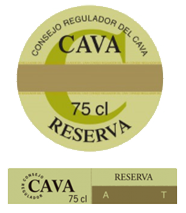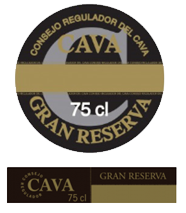WINE MAKING
Cava is made the same way that Champagne is produced, but with different grapes: Xarel·lo, Macabeu and Parellada. This three indigenous varieties grown in the Penedès wine region are blended together in the most traditional Cava coupage to produce MAS PERE.
On the other hand, MAS PERE Brut Rosé is made from Trepat, a red grape variety indigenous of the Conca de Barberà Valley.
These varieties are grown in the Penedès wine region and under stringent quality controls along all the vineyard’s life cycle.
Macabeu grape is responsible for the floral aromatics, a lemony flavor with a slightly bitter finish that tastes similar to green almonds. It is resistant to oxidation and has a low acidity.
Xarel·lo: beingmuch more aromatic, this grape has a natural acidity that lends fresh, rich floral aromas and apple, pear/melon-like notes.
Parellada brings ripping high acidity and zesty citrus flavors.
A Mas Pere cava embodies Macabeu’s floral aromàtics, Parellada’s freshness and delicacy and the body and structure of the Xarel·lo.
Trepat. Trepat is sourced from the Conca de Barberà Valley, which is known for producing wines and cavas from this variety, which brings fresh, berry-flavoured wines. To produce Mas Pere Brut Rosé the must and skins of the Trepat grape are macerated for 16 to 20 hours in order to extract this Cava’s characteristic colour and bring out the grape’s aromas to the full.
The grape varieties authorized by the Apellation of Origin Cava (DO Cava) for the production of base wine for Cava are the following ones:
White grapes varieties:
Red grapes varieties:
SPARKLING WINE:
CAVA
MAS PERE understands that quality in Cava starts in the vineyard. A team of technicians monitor the vines throughout their life-cycle,applying stringent controls and sustainable practices. The grapes are harvested by hand, making a first selection in the vineyard. In the winery, the grapes are de-stemmed and are crushed gently in a pneumatic press to extract the must. Each variety is vinified separately and fermented in stainless steel tanks at an average controlled temperature of 15ºC. During this process, the yeasts transform the natural sugar contained in the grapes into alcohol and carbon dioxide obtaining mono varietal base cava wines.
After vinification, base wine is carefully selected by the winemaker and oenologist for the perfect blend or single grape cava, according to the profile desired (with more acidity if for a long ageing cava, with more fruity aromas, etc). The base wine isthen clarified, it undergoes a tartaric stabilisation process and is finally filtered.
SECOND FERMENTATION: SPARKLING WINE
The second fermentation takes place in the bottle, following the Traditional Method.
The bubbles in Cava come from a secondary fermentation in the bottle. The longer the ageing, the more integrated the fizz, and a more elegant cava.
Ageing. The ageing time on racks varies and will determine the Cava’s category.
The bottles are racked horizontally and aged under constant temperature and humidity conditions for a minimum of nine months, the period required for the sparkling wine to be called Cava. The ageing period determines the Cava’s category.
According to different MAS PERE ageings we find:



